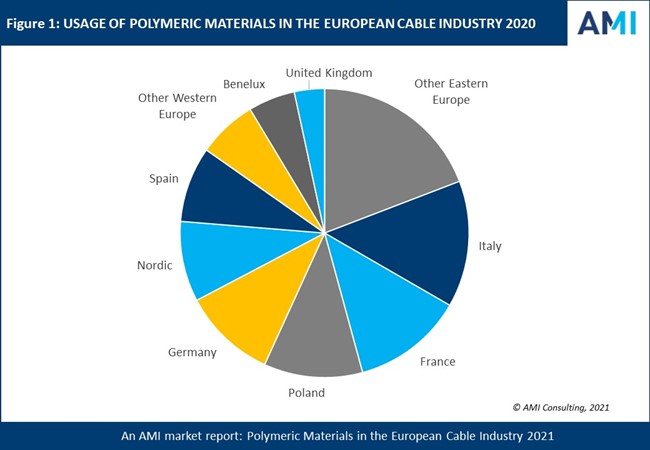The European cables market recovers strongly from the COVID-19 pandemic and will continue to grow
11 May 2021
AMI Consulting have just published the new edition of its in-depth market report that analyses the use of polymeric materials in the European cables industry.
This niche but high value market saw an increase of 2.8% per year between 2016 and 2019. During this time, the problems suffered by the automotive sector offset the growth seen across other applications such as renewables or telecommunications. In 2020, the industry was negatively impacted by the COVID-19 pandemic, in particular during the first half of the year. However, the market has seen a strong beginning of 2021 and it is expected to reach pre-COVID levels despite the raw material sourcing issues faced across the supply chain early in the year. The future for cables in Europe looks bright as it is expected to grow at a faster rate between 2019 (pre-COVID levels) and 2025. Growth will be mainly driven by investment in infrastructure, construction and renewables.

The industry continues to go through a consolidation process that is finally slowing down across most European countries, after a period of more intense consolidation between 2008 and 2016. The acquisition of General Cable by the Prysmian Group is the most significant M&A operation in recent years and the group’s operations continue to be restructured to optimise production and reduce costs. In 2019, the six largest cable producers accounted for over 50% of the material consumption in Europe. The best-known cable manufacturing companies in Europe include Prysmian, Nexans, NKT Cables or Tele-Fonika, but there are many more. AMI Consulting’s market report provides material consumption by type of compound for just under 350 cable manufacturing plants in Europe in its latest market report.
The implementation of the Construction Products Regulation (CPR) regulation has been an important driver for changes in material selection in Europe but not the only one. Energy Transition, for example, is also becoming a key driver for change and a significant driver for growth (e.g. the German Corridor underground cable projects to transport the renewable energy generated in Germany’s north to Southern areas). Different growth rates across all applications have also contributed to different prospects and peculiarities across European countries, all explored in detail in this market report. Overall, demand for HFFR-LSFOH compounds has grown the fastest in recent years in Europe but this is expected to change as the use of XLPE compounds is expected to see the fastest growth rates during the next few years.
The report quantifies the market and identifies its demand drivers, material selection trends, the regulations affecting and the changes underway. The report also provides a historic snapshot of the industry’s biggest players and a site-by-site outline of polymeric material consumption. It provides an analysis of the past and an outlook for the future, based on 2016-2020 data and forecasts for 2021-2025.
Polymeric Materials in the European Cable Industry 2021 is aimed at assisting industry participants and investors understand the size, structure and growth of the market, anticipate change, direct resources, and proactively manage threats and opportunities.